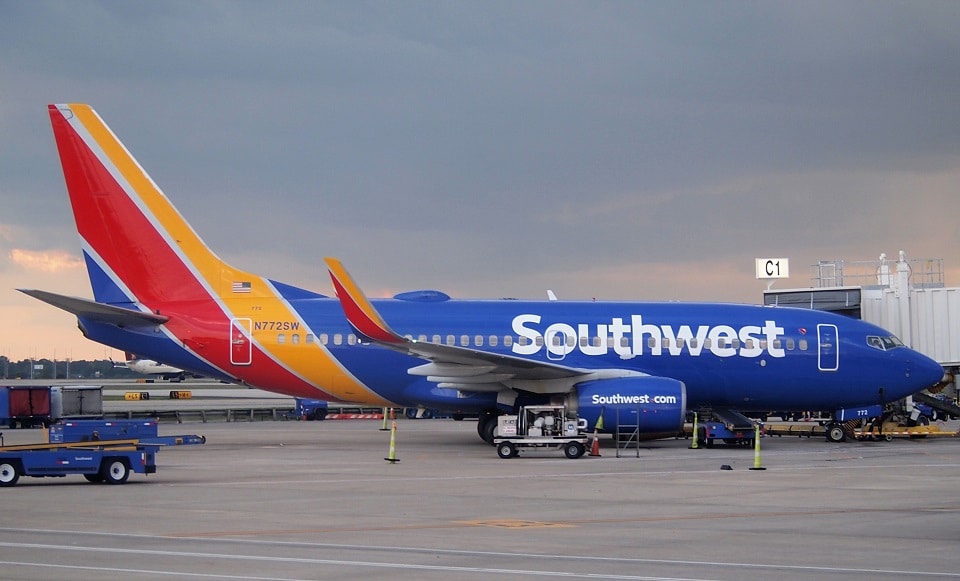Aerospace
Tibet Airlines plane in flames, passengers evacuated before take-off in southwestern China

On Thursday, a passenger plane operated by China’s Tibet Airlines skidded off the runway and caught fire as it took off from Chongqing in the country’s southwest.
According to the state-run Xinhua news agency, the Tibet-bound airliner carried 113 passengers and nine staff members.
The passengers and crew were all removed from the jet, and the injured were sent to a nearby hospital for treatment.
The number of those killed was not immediately known, according to the state-run China Global Television Network (CGTN).
According to the Hong Kong-based South China Morning Post, video footage aired by China Central Television (CCTV) showed flames and billowing black smoke spewing from the fuselage of the Tibet Airlines plane on the tarmac at Chongqing Jiangbei international airport.
Several people were seen fleeing the plane. after escaping through the back door’s evacuation slide The fire had been put out and the runway had been closed, according to CCTV.
When the fire broke out, the plane was set to take off towards Nyingchi, Tibet. The accident is being investigated, according to the airline. This is the second passenger aviation accident in China in recent weeks.
Breaking: Tibet Airlines A319 runway excursion at Chong Qing Intl Airport. pic.twitter.com/kasNSz3glP
— ChinaAviationReview (@ChinaAvReview) May 12, 2022
The Chongqing Jiangbei International Airport has since resumed normal operations. The airport stated, “The cause of the accident is being probed.”
SpiceJet jet takes off from Rajkot without obtaining ATC approval.
The incident comes after a China Eastern flight from Kunming to Guangzhou crashed into a mountainside in March, killing all 132 passengers and crew members.
No reason has been given for the incident, which was China’s bloodiest in approximately 30 years.
Two flight recorders, often known as “black boxes,” were found and are being studied in the United States in the hopes of solving the riddle surrounding the China Eastern jet’s quick plummet.
Top 10 best airports in the world 2021 by Skytrax
As media outlets and people flocked to the scene of the collision, China’s ruling Communist Party moved rapidly to restrict information, firing up its censorship engine.
— ChinaAviationReview (@ChinaAvReview) May 12, 2022
According to authorities, no problems were reported prior to the flight, and no risky cargo was on board, and the plane’s navigation and monitoring equipment showed no irregularities.

Aerospace
Boeing Transfers Rocket Stage to NASA, Paving Way for Human Moon Mission

Boeing has achieved a significant milestone by providing NASA with the second core stage of the Space Launch System (SLS) rocket.
This crucial component, crafted at NASA’s Michoud Assembly Facility (MAF), is set to propel the Artemis II crew into lunar orbit, marking humanity’s return to deep space after a 50-year hiatus.
The monumental Boeing-built rocket stage, the largest element of the Artemis II mission, will embark on a journey aboard the Pegasus barge, traveling 900 miles to NASA’s Kennedy Space Center.
Comparison of two legendary aircraft B777x vs B747 aircraft:Click here
Upon arrival, it will be meticulously integrated with other essential Artemis II components, including the upper stage, solid rocket boosters, and NASA’s Orion spacecraft within the iconic Vehicle Assembly Building. This intricate integration process is a vital step toward the eagerly anticipated Artemis II launch, slated for 2025.
“Boeing-built products helped land humankind on the moon in 1969, and we’re proud to continue that legacy through the Artemis generation,” remarked Dave Dutcher, vice president and program manager for Boeing’s SLS program. “Together, with NASA and our industry partners and suppliers, we are building the world’s most capable rocket and paving the way to deep space through America’s rocket factory in New Orleans.”
NASA, Lockheed Martin Reveal X-59 Quiet Supersonic Aircraft:Click here
The delivery of Core Stage 2 marks a significant achievement in the evolution of the SLS rocket. Towering over 200 feet and powered by four RS-25 engines, this core stage, coupled with two solid-fueled booster rockets, will generate a staggering 8.8 million pounds of thrust. This immense power is crucial to launching Artemis II and future missions into the vast expanse of space.
The SLS rocket stands unparalleled in its capability to transport both crew and substantial cargo to the moon and beyond in a single launch. Its extraordinary capacity will facilitate the delivery of human-rated spacecraft, habitats, and scientific missions to destinations including the moon and Mars, ushering in a new era of space exploration.
-

 Travel1 week ago
Travel1 week agoAir India to Expand US Operations with Three New Routes After a Decade
-

 Travel2 weeks ago
Travel2 weeks agoWhy We Should Avoid These Stamps in a Passport
-

 Airlines1 month ago
Airlines1 month agoInvestigations Reveal Fake Chinese Titanium in Boeing and Airbus Jets
-

 Tech4 weeks ago
Tech4 weeks agoChina’s CATL Plans 1,800-Mile Electric Plane Launch by 2027
-

 Airport3 days ago
Airport3 days agoTop 10 Largest Airports in the World by Size
-

 Aerospace4 weeks ago
Aerospace4 weeks agoChina’s Fighter Jets Turn Wings into Autonomous Drones
-

 Airlines4 days ago
Airlines4 days agoAir India Rolls Out A350s for Delhi-New York JFK and Newark Routes
-

 Defence3 weeks ago
Defence3 weeks agoBoeing Enhances Chinook with New Engines and Block II Upgrades at $96 Million







